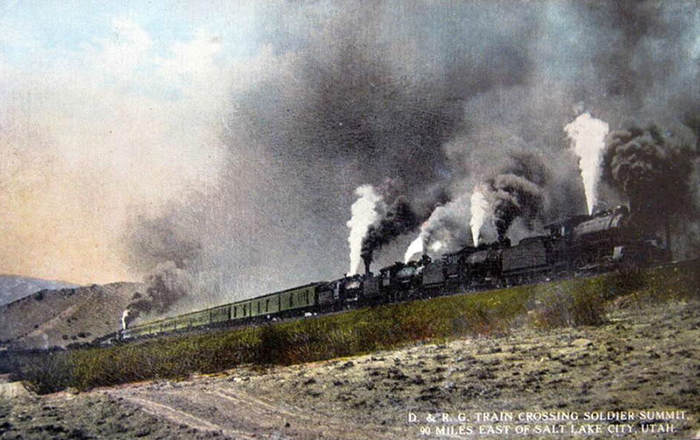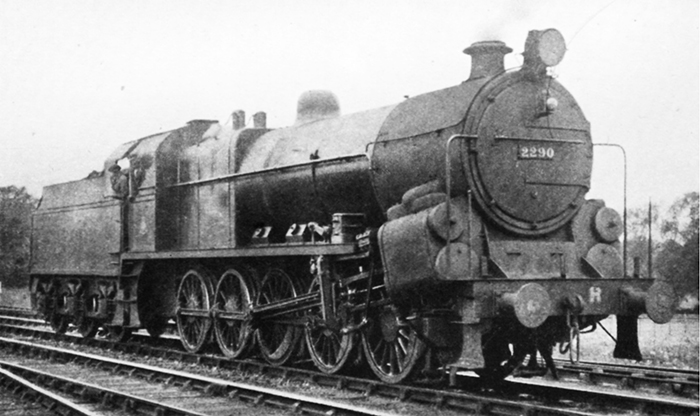

 STUART JORDAN looks at how extra traction is used on inclines.
STUART JORDAN looks at how extra traction is used on inclines.
Bank engines (known as Helper Engines in the US) are extra locomotives added to a train to assist in getting it up and down steep gradients safely. They can be added to either the back to push the train or at the front to pull, and sometimes within the rolling stock themselves. These ‘swing helpers’ are placed where they are both pushing and pulling the same tonnage, at what is known as the ‘swing point’. Note that on some lines, the banker may not be coupled to the train thus enabling a non-stop ‘release’ of the locomotive at the summit; instead, it just backs off. An example of this would banking locomotives on the Gotthard Pass in Switzerland.
Bankers were used extensively during the steam period, more so than after the introduction of diesel-electric traction and before the advent of dynamic brakes. They were used particularly often in the west of America, where long trains would have to traverse steep mountainous inclines. Soldier Summit in Utah was one of these passes, and the nearby town of Helper was named after the engines stored there by the Denver & Rio Grande Western Railway.

Triple-headed (with pusher) train heading up Soldier Summit.
Generally, in this period, pushers at the rear of the train would be used. This would also prevent wagons from running away back down the bank. It was also the easiest way to couple and uncouple, as the pusher could be detached at the top of the gradient before running back down to a siding at the bottom.
Communication between the two locomotives was essential to ensure that the train remained safe; whistle signals were used to coordinate applying power and brakes and prevent derailments and other accidents. Unfortunately, a communication failure could cause disaster, as happened at Chapel-en-le-Frith in Derbyshire in 1957.
A LMS 8F locomotive driven by John Axon was being pushed up to Dove Holes by a banker engine. The previously repaired steam supply failed, filling the cab with steam and disabling the locomotive’s brakes and whistle. Unable to alert the pushing locomotive, Axon instructed the fireman to jump out and attempt to apply wagon brakes. The locomotive reached the summit and began accelerating down the 1-in-58 gradient towards Chapel-en-le-Frith. Axon stayed on the train and attempted to close the regulator in the scalding heat. A two-car DMU was evacuated, but the locomotive struck the rear of a freight service, killing both Axon and the guard of the freight train. For his attempt to stop an even worse accident from happening, Axon was awarded the George Cross.

Norris Locomotive heading up the Lickey Incline.
In modern times, bank locomotives are controlled by the driver in the main locomotive via coded radio or direct electrical control. Banking locomotives are still used on the UK network, specifically at the Lickey Incline south of Birmingham. The two-mile-long line is a gradient of 1-in-37.7 and high-performance Norris locomotives were imported from the USA when the line first opened in 1840.

No. 2290 - Big Bertha.
Various locomotives were built to handle the line, but the most famous was the 0-10-0 No. 2290, built by the Midland Railway in 1919. Known as the Lickey Banker (nicknamed ‘Big Bertha’), this locomotive was in service until 1956, when after 838,856 miles it was scrapped and BR Standard 9Fs were used instead. Pairs of Class 37 Diesels were later used, and even to this day DB Cargo UK maintain specially modified Class 66 Locomotives (66056-57 and 66059) with air-release couplers to assist freight trains. Modern DMUs such as 220s or 221s suffer very little speed reduction up the Lickey Incline.